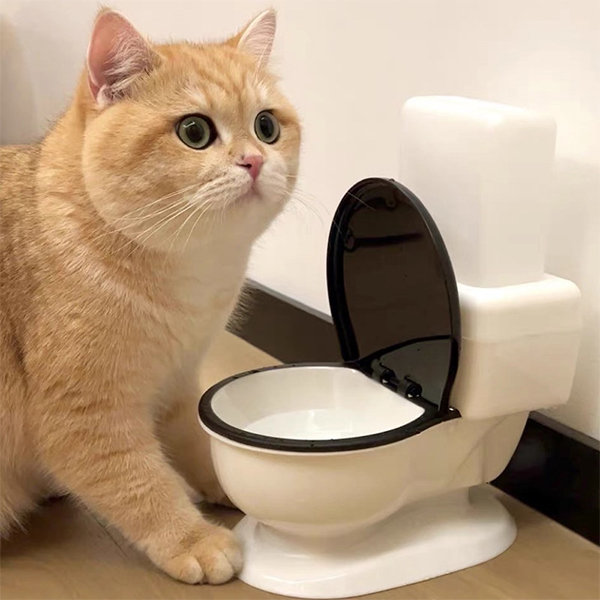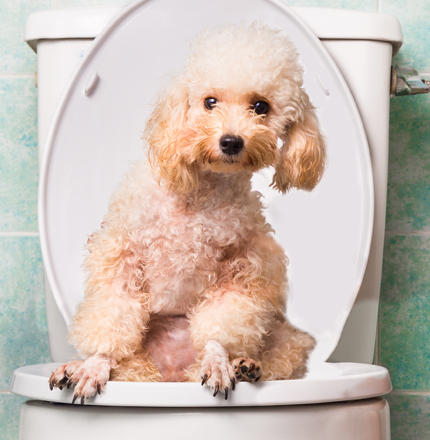An Threats of Flushing Animal Waste Down the Toilet
An Threats of Flushing Animal Waste Down the Toilet
Blog Article
How do you really feel on the subject of Can You Flush Dog and Cat Poo Down the Toilet??

When it concerns getting rid of waste, especially animal waste, many people commonly consider the practical option of flushing it down the commode. However, this relatively simple option can have serious effects for the setting and public health. In this post, we'll explore why flushing pet waste down the commode is a poor concept and supply alternate techniques for proper disposal.
Intro
Proper garbage disposal is vital for maintaining ecological sustainability and public health. While it may appear harmless to purge animal waste down the toilet, it can bring about numerous problems, both for the setting and human well-being.
Threats of flushing animal waste
Environmental influence
Flushing animal waste presents harmful germs and virus right into rivers, which can adversely impact aquatic environments. These virus can contaminate water sources and damage aquatic life, interfering with fragile ecosystems.
Public health worries
Pet waste has unsafe bacteria such as E. coli and Salmonella, which can pose serious health risks to humans. Purging pet waste down the commode can pollute water materials, causing the spread of illness and infections.
Alternatives to flushing
Instead of flushing pet waste down the bathroom, there are a number of alternative disposal approaches that are a lot more environmentally friendly and hygienic.
Composting
Composting pet waste is an eco-friendly means to throw away it. By composting, organic matter is broken down right into nutrient-rich soil, which can be made use of to feed gardens and plants.
Garbage dump disposal
Throwing away animal waste in a land fill is one more alternative. While not as environmentally friendly as composting, it is a more secure alternative to flushing, as it stops the contamination of water sources.
Family pet waste disposal systems
There are customized animal waste disposal systems available that securely and hygienically dispose of pet waste. These systems frequently make use of enzymes to break down waste and remove smells.
Actions to appropriate pet waste disposal
To make sure proper disposal of pet get more info waste, follow these actions:
Scooping and nabbing waste
Regularly scoop and bag animal waste utilizing eco-friendly bags. This prevents waste from contaminating the environment.
Making use of marked waste containers
Dispose of bagged pet waste in assigned waste containers, such as compost bins or landfill containers. Stay clear of flushing it down the bathroom in any way costs.
Cleansing can and animal areas regularly
Regularly tidy litter boxes and pet dog locations to prevent the build-up of waste and microorganisms. Use pet-safe cleansing products to keep hygiene.
Benefits of appropriate disposal methods
Embracing proper disposal techniques for animal waste uses several benefits:
Lowered environmental pollution
Proper disposal techniques reduce the danger of environmental pollution, shielding waterways and communities from contamination
Lessened threat of water contamination.
By avoiding flushing animal waste down the bathroom, the threat of water contamination is significantly decreased, securing public health.
Boosted hygiene and health
Proper disposal methods promote much better cleanliness and health, producing a safer atmosphere for both humans and animals.
Conclusion
Finally, flushing animal waste down the toilet is unsafe to the atmosphere and public health. By embracing different disposal techniques and complying with appropriate waste monitoring techniques, we can lessen the unfavorable impact of pet waste and contribute to a cleaner, much healthier world.
What To Do With Dog Poo – The Do's And Don'ts Of Disposing Of Faeces
Dog poo bins
Some councils provide dedicated dog waste bins in popular dog-walking areas that can take dog poo that has been bagged but you can legally dispose of dog waste in any public litter bin, as long as it is securely bagged. This also applies to your wheelie bin at home.
Do not flush
Water companies do not recommend flushing dog faeces down the toilet because certain parasites can survive the water processing treatment and are potentially harmful to humans. You should also never consider flushing dog poo that has been bagged down the toilet as the bags will not break down and instead create severe blockages in the sewage system.
In the woods
The Forestry Commission promotes a ‘stick and flick’ method for dealing with waste in the woods. This means finding a stick and using it to flick any poo from off the path so that it is out of the way of other walkers. You could also bury it as long as it is not in an area where there might be livestock.
Livestock
Parasites found in dog poo can be transmitted to livestock if they inadvertently eat infected faeces that has been left on grazing land. This could result in the death of sheep or abortion in cattle so you should always make sure you pick up your dog’s waste in fields where livestock could be present.

Regularly tidy litter boxes and pet dog locations to prevent the build-up of waste and microorganisms. Use pet-safe cleansing products to keep hygiene.
Benefits of appropriate disposal methods
Embracing proper disposal techniques for animal waste uses several benefits:
Lowered environmental pollution
Proper disposal techniques reduce the danger of environmental pollution, shielding waterways and communities from contamination
Lessened threat of water contamination.
By avoiding flushing animal waste down the bathroom, the threat of water contamination is significantly decreased, securing public health.
Boosted hygiene and health
Proper disposal methods promote much better cleanliness and health, producing a safer atmosphere for both humans and animals.
Conclusion
Finally, flushing animal waste down the toilet is unsafe to the atmosphere and public health. By embracing different disposal techniques and complying with appropriate waste monitoring techniques, we can lessen the unfavorable impact of pet waste and contribute to a cleaner, much healthier world.
What To Do With Dog Poo – The Do's And Don'ts Of Disposing Of Faeces
Dog poo bins
Some councils provide dedicated dog waste bins in popular dog-walking areas that can take dog poo that has been bagged but you can legally dispose of dog waste in any public litter bin, as long as it is securely bagged. This also applies to your wheelie bin at home.
Do not flush
Water companies do not recommend flushing dog faeces down the toilet because certain parasites can survive the water processing treatment and are potentially harmful to humans. You should also never consider flushing dog poo that has been bagged down the toilet as the bags will not break down and instead create severe blockages in the sewage system.
In the woods
The Forestry Commission promotes a ‘stick and flick’ method for dealing with waste in the woods. This means finding a stick and using it to flick any poo from off the path so that it is out of the way of other walkers. You could also bury it as long as it is not in an area where there might be livestock.
Livestock
Parasites found in dog poo can be transmitted to livestock if they inadvertently eat infected faeces that has been left on grazing land. This could result in the death of sheep or abortion in cattle so you should always make sure you pick up your dog’s waste in fields where livestock could be present.

We were made aware of that report about Why you should never flush dog poop down the toilet through a buddy on a different web property. Enjoyed reading our blog? Please share it. Help somebody else check it out. I treasure your readership.
Request An Appointment Report this page